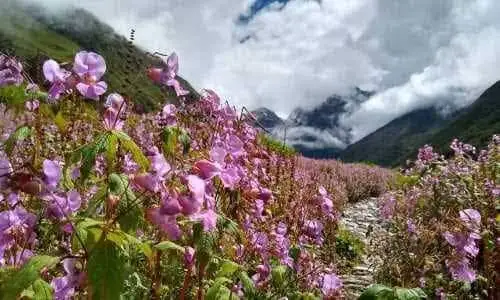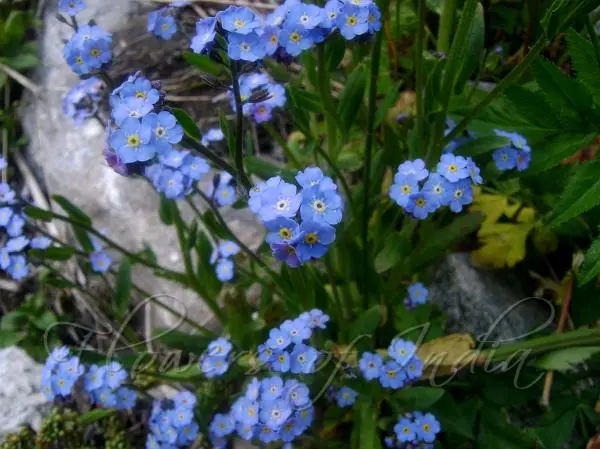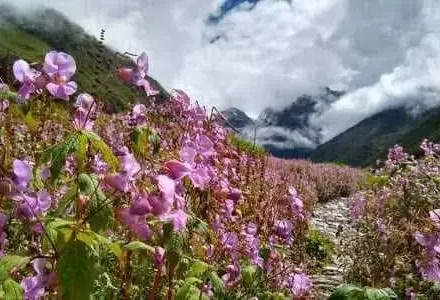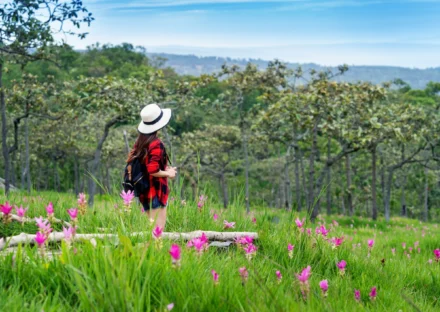- Details
- Itinerary
- Photos
Tour overview
Valley of Flowers Trek Package Uttarakhand Only @6500/-* Govind Ghat to Govind Ghat
Book Now
Valley of Flowers Trek Package Uttarakhand Only @8500/-* Rishikesh to Rishikesh
Book Now
*GST Included – No Hidden or Extra Charges.
Valley of Flowers Trek Highlights
- Stunning Natural Beauty: The Valley of Flowers is a UNESCO World Heritage Site known for its stunning scenery, which includes snowy peaks, vibrant meadows, and alpine flowers.
- Colorful Floral Extravaganza: During the monsoon season, the valley becomes a living carpet of flowers with a wide variety of alpine flowers of different colors and patterns.
- Pristine Himalayan Landscape: The trek takes you through pristine mountain landscapes, lush green forests, cascading waterfalls, and gurgling streams, with the majestic peaks of the Nanda Devi National Park in the backdrop.
- Rich Biodiversity: In the valley, home to rare and endangered Himalayan flora and fauna, there is a chance to see bears, deer, snow leopards, blue sheep, and various bird species.
- Spiritual and Meditative Experience: The serene ambiance of the valley, along with visits to the Hemkund Sahib Gurudwara, provides a spiritual and meditative retreat amidst nature’s beauty.
About Valley of Flowers Trek
The Valley of Flowers trek is a popular hiking route located in the state of Uttarakhand, India. It is known for its stunning landscapes, vibrant alpine flowers, and stunning natural beauty. Here are some key details about the Valley of Flowers trek:
Location: The Valley of Flowers is situated in the Chamoli district of Uttarakhand, within the Nanda Devi National Park. Approximately 3,658 meters (12,000 ft) above sea level is its elevation.
Accessibility: The trek to the Valley of Flowers begins from the village of Govindghat, which is well-connected by road from major cities like Rishikesh and Haridwar. From Govindghat, trekkers need to hike for approximately 16 kilometers (10 miles) to reach the valley.
Trek Duration: The duration of the Valley of Flowers trek typically ranges from 4 to 6 days, depending on the itinerary and the fitness level of the trekkers. This includes both the ascent to the valley and the return journey.
Best Time to Visit: The best time to undertake the Valley of Flowers trek is during the months of July to September. This is when the valley is in full bloom, with a breathtaking display of colorful flowers. The monsoon season offers copious rainfall that feeds the vegetation and improves the environment’s beauty.
Trek Difficulty: The Valley of Flowers trek is considered to be of moderate difficulty. The trail involves a mix of gradual ascents, descents, and some steep sections. Trekkers should have a reasonable level of fitness and be prepared for long walks and challenging terrains.
Permit and Guidelines: Since the Valley of Flowers is located within a national park, trekkers are required to obtain a permit from the Forest Department. It is important to follow the instructions given by the authorities to preserve the delicate ecosystem of the valley.
Accommodation: There are basic accommodation options available at Govindghat and Ghangaria, which is the base camp for the trek. However, during the actual trek to the valley, camping is a common practice. Trekkers need to carry their own camping gear or arrange for a trekking operator who provide camping facilities.
These details provide an overview of the Valley of Flowers trek, including its location, accessibility, the best time to visit, trek difficulty, permits, and accommodation options.
It is a remarkable journey for nature enthusiasts, offering a glimpse of the mesmerizing beauty of the Himalayas.
Flowers at a Glance
The Valley of Flowers trek in Uttarakhand, India, is a breathtaking journey into a floral paradise. This Western Himalayan UNESCO World Heritage Site is well recognized for its vibrant and varied alpine vegetation. Here is a glimpse into the fascinating flowers you can encounter on this remarkable trek:
Brahma Kamal (Saussurea Obvallata): Known as the “King of Himalayan flowers,” the Brahma Kamal is an exquisite white flower with a golden center. It blooms only at night and is considered sacred by the locals.

Blue Poppy (Meconopsis Aculeata): With its striking blue petals, the Blue Poppy is a sight to behold. It thrives in the cool and moist conditions of the valley, adding a touch of rare beauty to the landscape.
Cobra Lily (Arisaema sp.): This unique flower resembles the hood of a cobra, hence its name. The Cobra Lily is characterized by its purple or green spathe, which surrounds a spiky inflorescence. It is a plant that feeds on insects since it is a carnivore.
Himalayan Slipper Orchid (Cypripedium Himalaicum): Delicate and enchanting, the Himalayan Slipper Orchid is a sought-after species in the valley. Its blooms, shaped like slippers, range in color from pale pink to deep maroon.
Himalayan Blue Poppy (Meconopsis betonicifolia): Another variety of the blue poppy, the Himalayan Blue Poppy stands out with its sky-blue petals. It flourishes in the valley’s high-altitude areas, lending a touch of ethereal elegance.
Balsam (Impatiens Sulcata): The Balsam flowers add a splash of color to the valley with their vibrant hues of pink, purple, and white. These delicate blooms thrive along streams and moist areas.


Himalayan Edelweiss (Leontopodium jacotianum): Resembling a star-shaped cotton ball, the Himalayan Edelweiss is a high-altitude flower known for its velvety white appearance. It symbolizes purity and is often considered a symbol of love.
Himalayan Marsh Marigold (Caltha palustris): The bright yellow blossoms of the Himalayan Marsh Marigold create a striking contrast against the green landscape. This flower thrives in wet and marshy areas, often found near streams and waterfalls.
Pink Primula (Primula denticulata ): The Pink Primula, also known as the Drumstick Primrose, displays round clusters of pink flowers on tall stems. These captivating blooms add a touch of elegance to the valley’s floral tapestry.
White Anemone (Anemone Obtusiloba): With its delicate white petals and bright yellow center, the White Anemone is a charming addition to the Valley of Flowers. It blooms abundantly during the monsoon season, carpeting the meadows with its beauty.
The Valley of Flowers Trek is a nature lover’s paradise, offering an unparalleled opportunity to witness the beauty and diversity of alpine flowers. You will be enchanted as you stroll through this lovely valley by the hues, scents, and sheer variety of flower delights that make this location so special.

Included
- Accommodation: Enjoy 6 nights of tented lodging on a triple sharing basis.
- Meals: All vegetarian meals from breakfast to dinner for the first day to seventh day.
- Morning and evening tea/coffee are served with light snacks during the trek.
- Camping Charges: All essential fees and permits for Indian residents are covered.
- Safety Equipment: Basic first aid medical kits including an oxygen cylinder and an oximeter.
- Expert Trek Leaders: Knowledgeable and experienced trek leaders and support staff.
Not Included
- Personal Insurance
- Medical Certificate
- Personal toiletry Items and Personal Medicine kit
DAY 1 - Haridwar/Rishikesh to Joshimath
Depart from Haridwar/Rishikesh and drive to Joshimath, a picturesque town in Uttarakhand.
Enjoy the scenic views of the Himalayas during the journey.
Visit the famous Adi Shankaracharya Math and explore the town.
Overnight stay in Joshimath.
DAY 2 - Joshimath to Govindghat and Ghangaria
Drive from Joshimath to Govindghat, the starting point of the trek.
Begin the trek from Govindghat to Ghangaria, a charming village located on the banks of the river Pushpavati.
Trek through verdant woodlands and stunning scenery.
Reach Ghangaria and rest for the night.
Overnight stay in Ghangaria.
DAY 3 - From Valley of Flowers to Ghangaria and Back
Start early in the morning and trek to the Valley of Flowers.
Explore the enchanting valley filled with vibrant alpine flowers, streams, and panoramic views.
Spend the day capturing the beauty of the valley and witnessing its diverse flora and fauna.
Return to Ghangaria by evening.
Overnight stay in Ghangaria.
DAY 4 - Hemkund Sahib to Ghangaria and Returning
Trek from Ghangaria to the famed Sikh shrine Hemkund Sahib, which is located at a height of 4,329 meters.
Visit the Hemkund Sahib Gurudwara and take a dip in the sacred lake.
Enjoy the stunning mountain vistas that surround you.
Descend back to Ghangaria.
Overnight stay in Ghangaria.
DAY 5 - Drive to Joshimath from Ghangaria and Govindghat.
Trek back from Ghangaria to Govindghat.
Drive from Govindghat to Joshimath.
Relax and rejuvenate in the serene environment of Joshimath.
Overnight stay in Joshimath.
DAY 6 - Joshimath to Haridwar/Rishikesh
Depart from Joshimath and drive back to Haridwar/Rishikesh.





